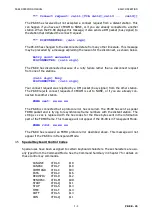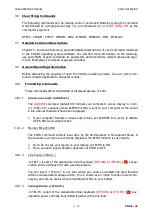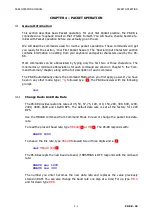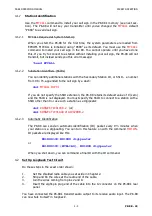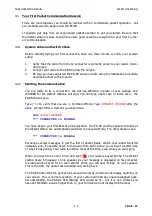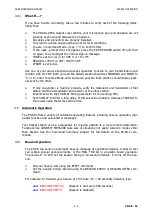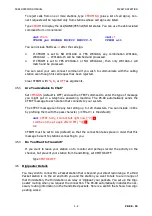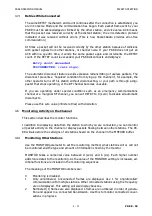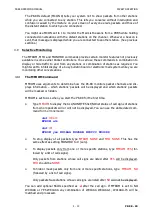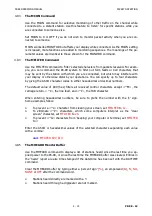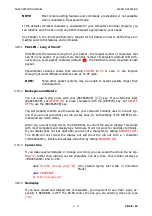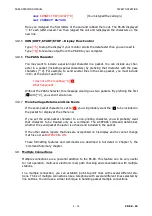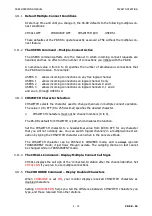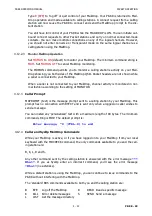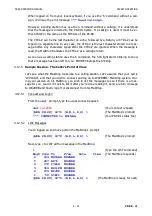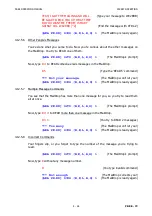
PK-88 OPERATING MANUAL
PACKET OPERATION
4 - 11
PK-88 - 58
4.7.1
Retries While Connected
The same RETRY mechanism and count continues after the connection is established, you
are in Converse Mode and the communication has begun. Each packet frame sent by your
PK-88 must be acknowledged or 'ACKed' by the other station, and vice versa. ACK means
that the packet was received correctly at the distant station; the error-detection protocol
indicated it was received without errors. (This is how Packet-Radio provides error-free
communication.)
At times a packet will not be received correctly by the other station because of collisions
with packet signals from other stations, or channel noise. If your PK-88 does not get an
ACK within a specific time, it sends the same packet again and increments the RETRY
count. If the RETRY count is exceeded, your PK-88 disconnects and displays:
Retry count exceeded
DISCONNECTED: {call sign}
The automatic disconnect feature avoids excessive retransmitting of useless packets. The
disconnect prevents a 'hopeless' condition from tying up the channel if, for example, the
other operator turns off his station without disconnecting, or your path is through a digi-
peater that stops operating, or the RF channel becomes unusable.
If you are operating under special conditions such as an emergency communications
channel or a marginal HF channel, you can set RETRY to 0 (zero) to disable all automatic
disconnects.
Please use this zero value (infinite retries) with discretion.
4.8
Monitoring Activity on the Channel
This section describes the monitor functions.
In addition to displaying data from the station to which you are connected, you can monitor
all packet activity on the channel or display packets flowing between other stations. The PK-
88 will also store the call signs of all stations heard on the channel in the MHEARD buffer.
4.8.1
Monitoring Other Stations
Use the MONITOR parameter to set the monitoring method; what stations will or will not
be monitored and the type and amount of information shown by the monitor.
MONITOR takes a numerical value between 0 (zero) and 6 (six). Each higher number
adds more detail to the monitoring. As the value of the MONITOR setting is increased, ad-
ditional functions are included in the monitoring sequences.
The meanings of the MONITOR numbers are:
0
Monitoring is disabled.
1
Only unnumbered, 'unconnected' frames are displayed. Use 1 for 'unprotocolled'
communication with multiple stations. Other connected stations using the frequency
are not displayed. This setting will also display beacons.
2
Numbered (I) frames are also displayed. I-frames are numbered in order of genera-
tion and appear in a connected transmission. Use this to monitor connected conver-
sations in progress.


